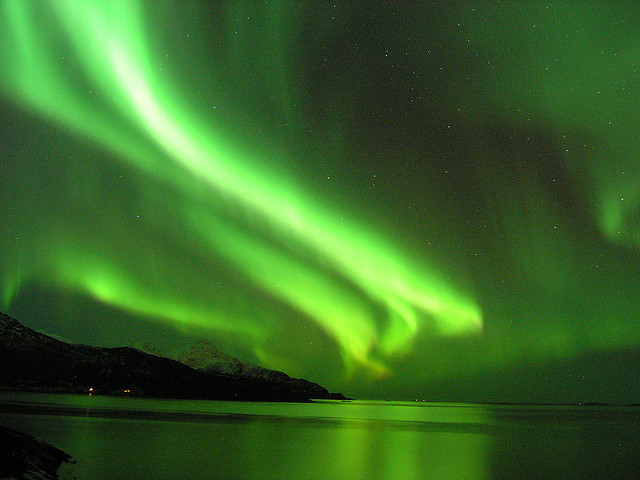Search Results for Tag: sun activity
Exploring the North – Lighting up the dark
Being out in the nowhere around Abisko also has a major advantage: due to the very small light pollution, you might get the chance to see what the polar region is famous for: the Northern lights.

When solar particles hit the earth’s atmosphere, sky starts to shine (Photo credit: CC BY SA 2.0: Gunnar Hildonen)
In one sentence: Northern lights occur when cosmic radiation meets the molecules of our atmosphere. In a few more sentences: Such radiation normally comes from the sun, being the closest active star around. When this so called solar wind hits the earth’s magnetic field with more than 700 kilometers per second (!) it’s particles are torn apart into charged particles which spans electric tension over the earth. This tension is discharged as the particles run along the earth’s magnetic field towards the poles, where this field is the strongest (This is also the reason why you can’t see the lights all over the world: the further you move from the poles, the lower is the chance to actually see the lights).
In 150km heigth those charged particles hit the earth’s atmosphere, and thereby pass some part of their energy onto the molecules of earth’s atmosphere, which – finally – stimulate them to glow. Which colour the lights have differs from height and the atmosphere’s composition.
There also might be a yte loose connection to climate change: There is a theory that this beautiful natural phenomenon helps to cool the earth. Due to the ionization of the air, also clouds might be formed and in consequence insulate the earth from warming rays of sunlight.




Feedback